RESEARCH MOBILES
Activate Content & Critical Thinking
Investigate how making can ignite literacy, research and data analysis across grades and content areas. Students explore the topic of your choosing and synthesize their discoveries through kinetic mobile making. Their creative journey activates fun, holistic learning ~ visual art, engineering, physical science, the design process, literacy, social studies, and statistics. This project uses basic and repurposed materials and is great for small group collaborations. It’s also a delightful team-building activity for staff and leaders.
-
K-12th Grade
Adult Learners
-
2-6 hours depending on mobile complexity
Chunk out in phases like video tutorials below
-
Integrates with any topic or investigation
-
In-class, Hybrid or Online Learning
Implementation Steps


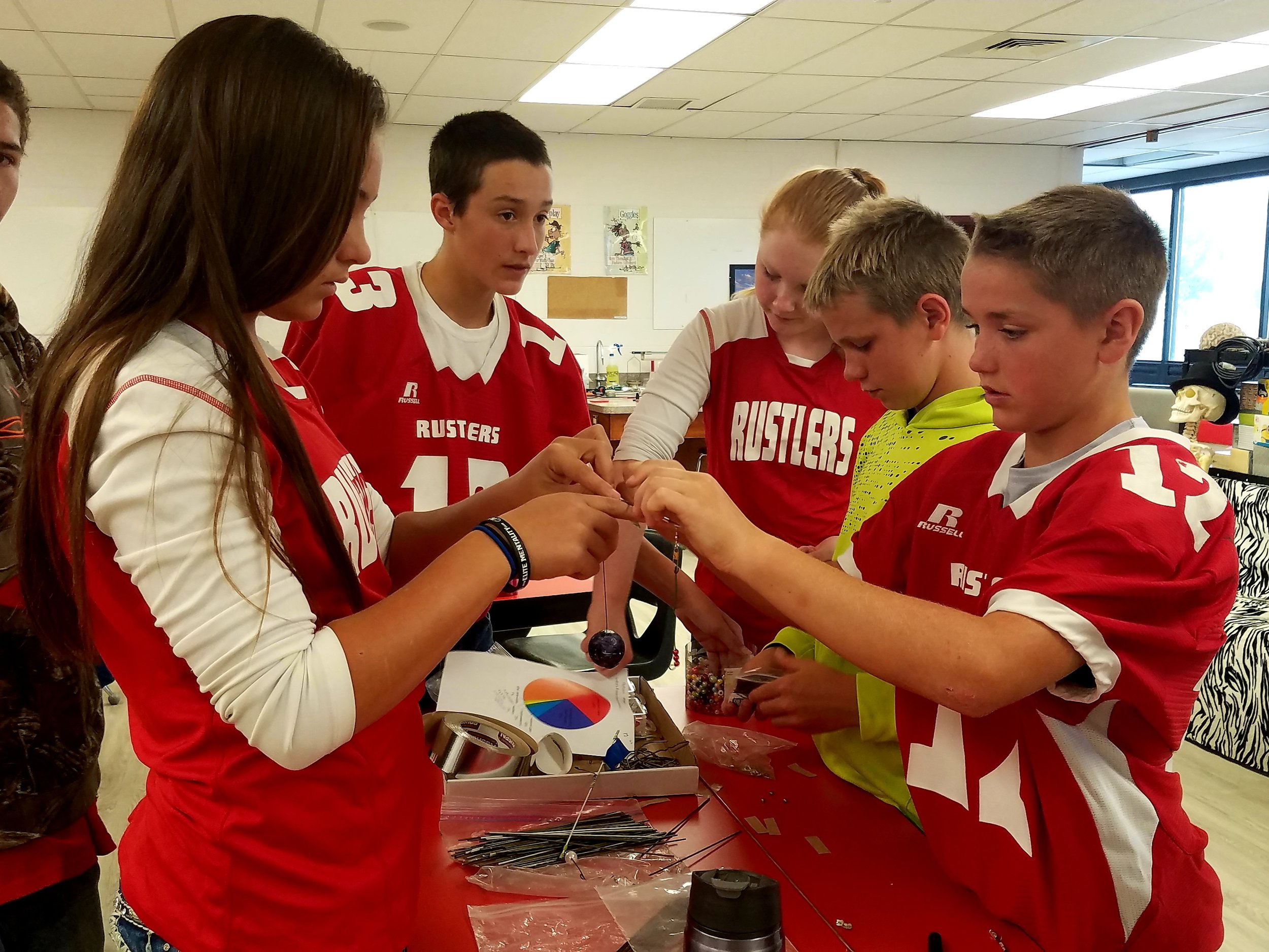
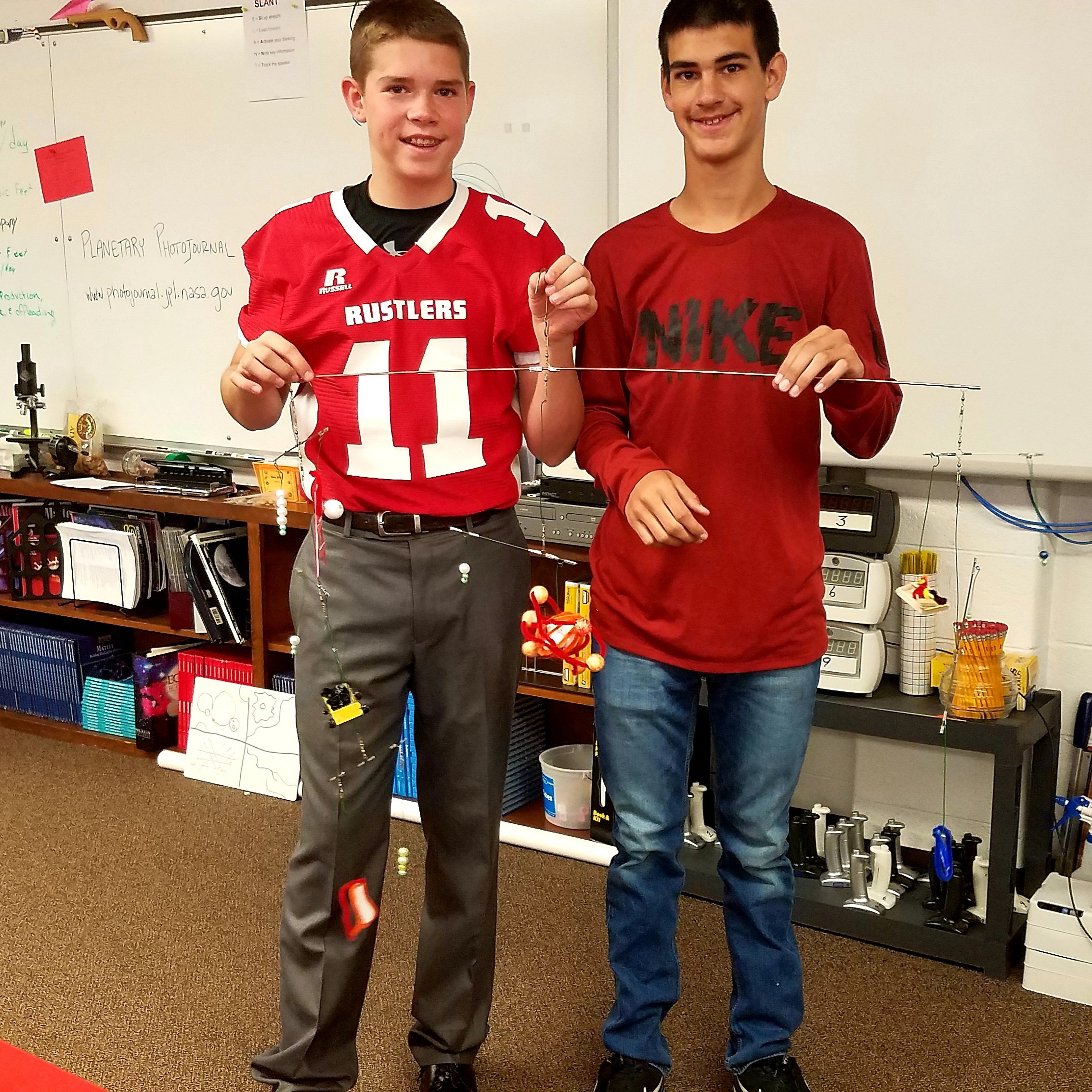
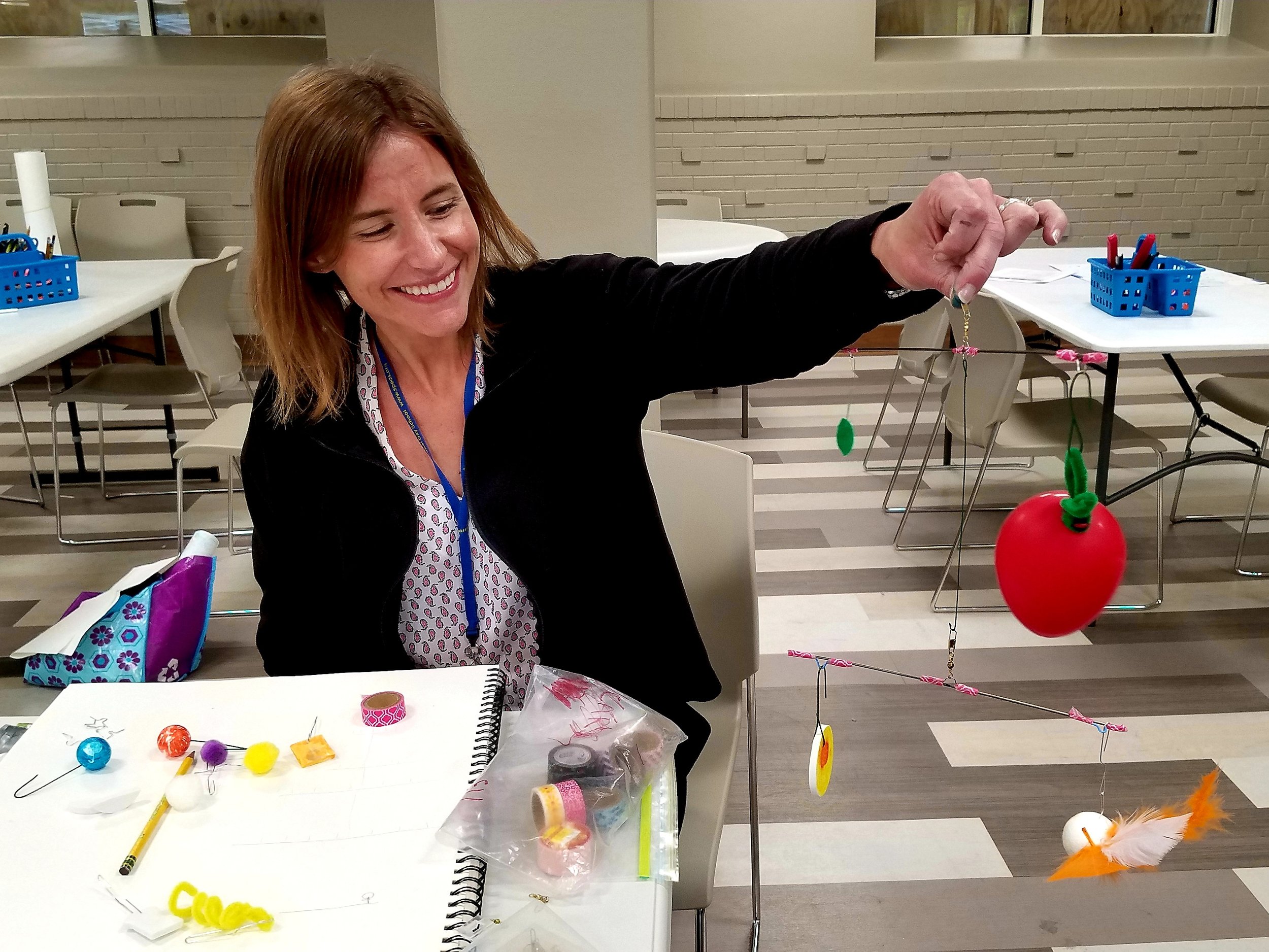


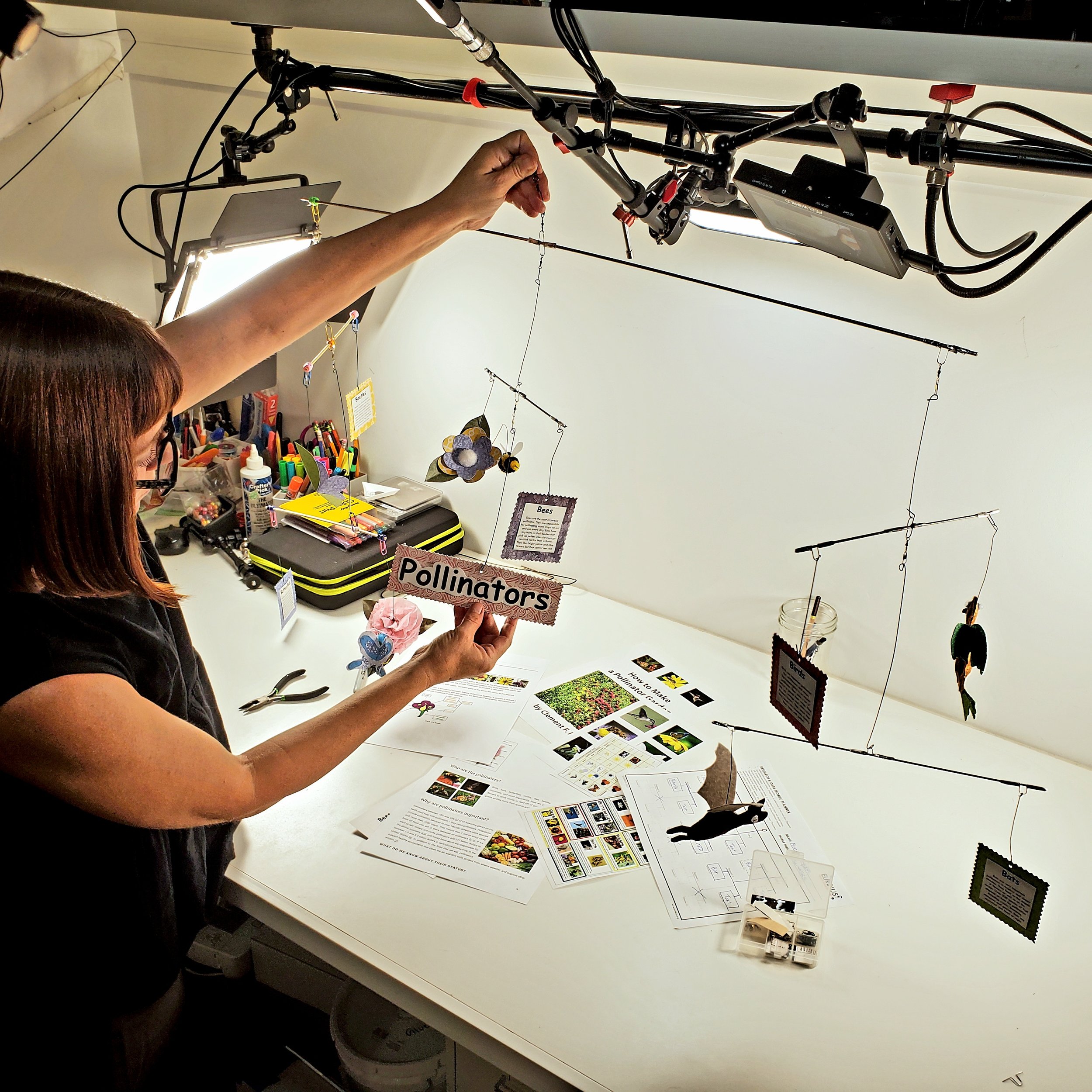

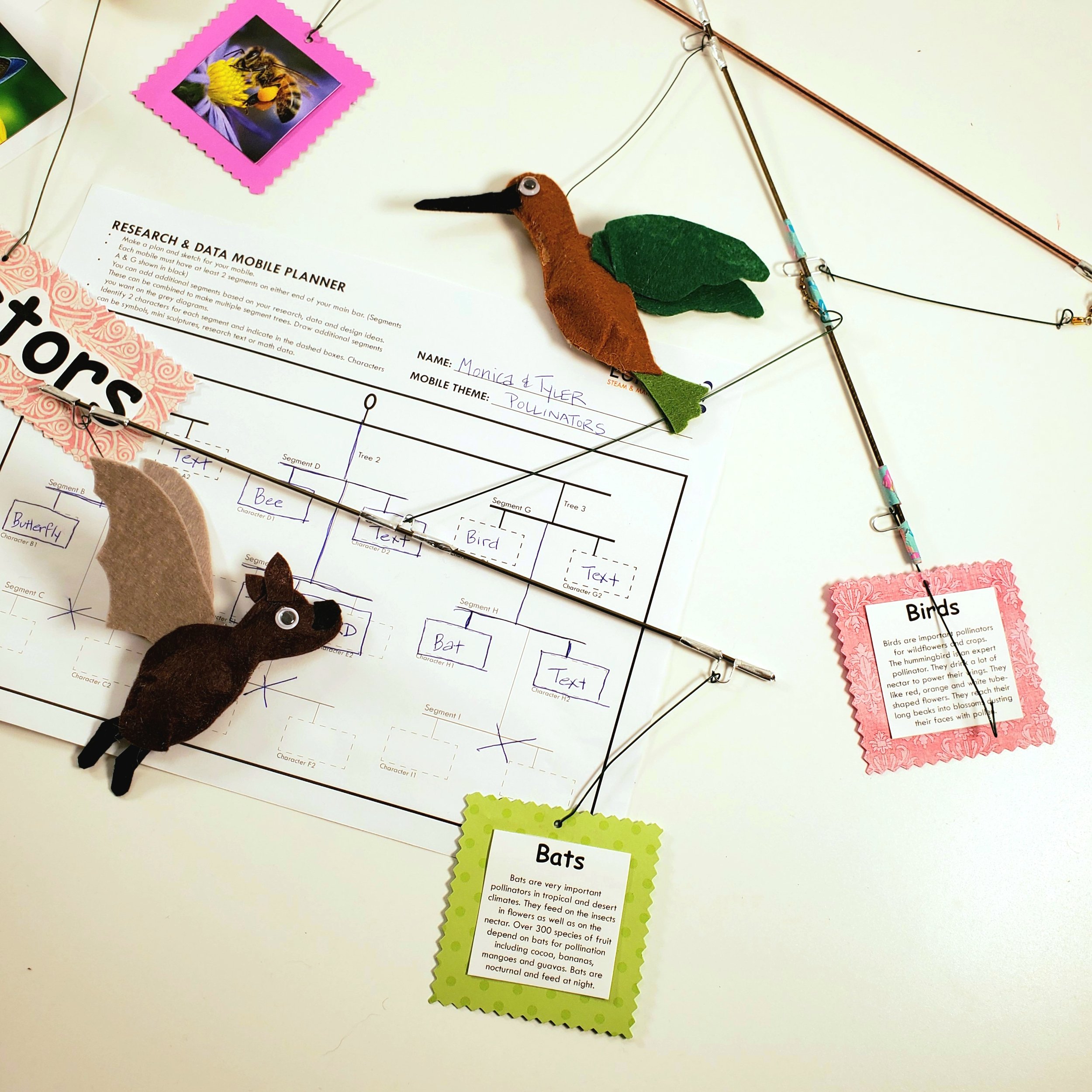
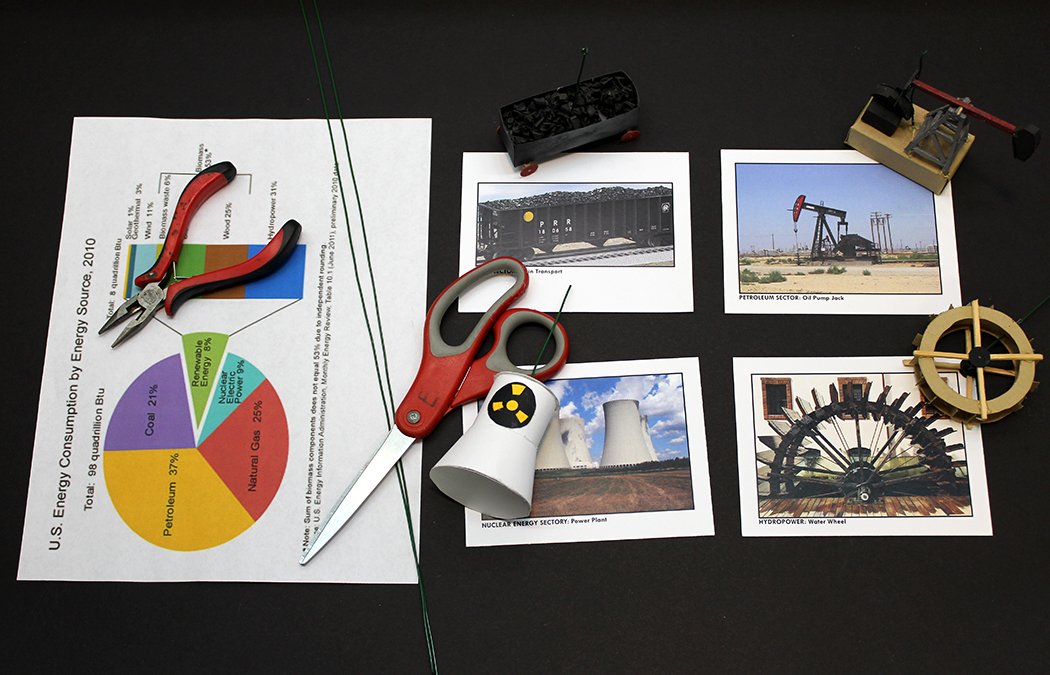


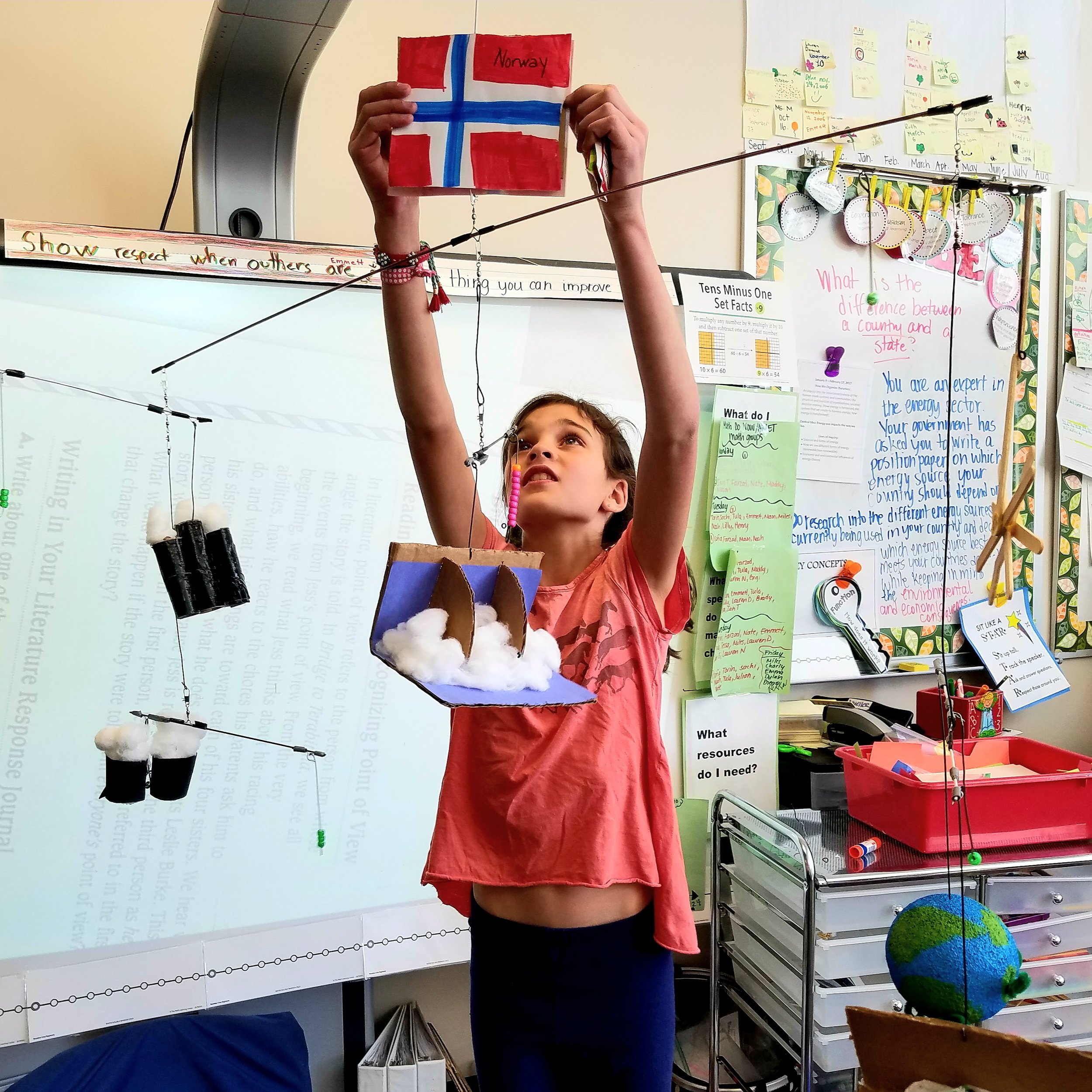




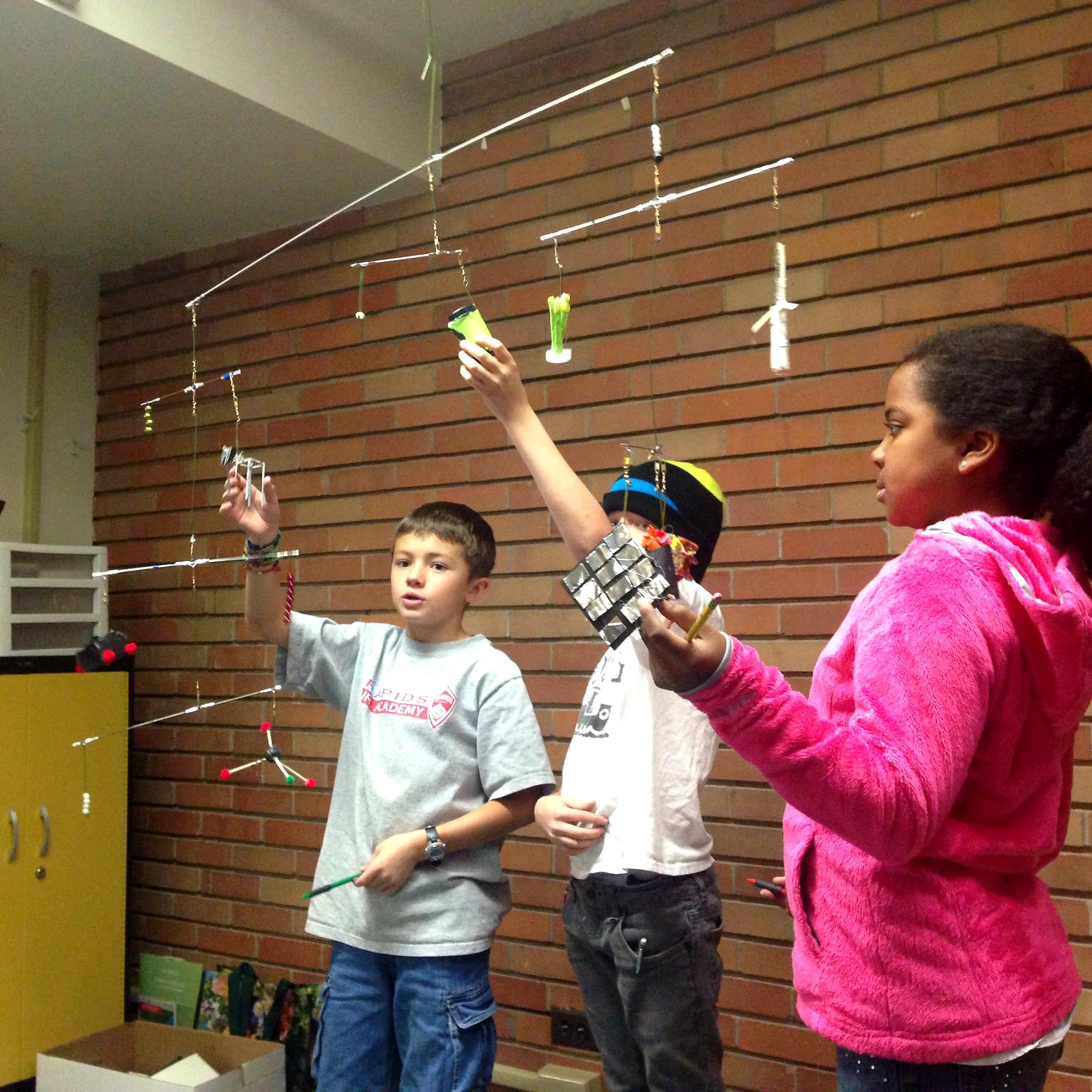



Overview
-
Our Research Mobiles program is super flexible. It can scale for many grade levels and activate any content area. The tutorials below show different techniques to customize mobile making for various ages and settings. You can also choose to make a mobile with a horizontal or vertical design. Mobile making is great as an individual or group project.
-
Download planners, templates & handouts below. Print any needed resources.
-
Use the Supply Planner below to collect materials and tools for class. We’ve also included links to some of our vendors to order bulk supplies & technology.
-
Explore our gallery of student work for inspiration. Be creative as you customize this program for your community. And, think of ways to integrate with your existing curriculum or units - literacy, social studies, engineering, design process, etc.
-
Watch the tutorials and make class samples. This allows you to learn the project, extend your ideas & trouble-shoot. We recommend chunking out the activity in phase like the videos.
-
Have a ball creating with your learners. You can show the video tutorials & slideshows in class to help guide you. You can also print and laminate our Quick Start Guide.
Planners, Templates & Handouts
Download Resources
-
-
-
Research Mobiles can easily scale for K-12 and integrate with any content area. Thus, they are a great project to enhance any investigation and can align with many Standards across grade levels. They also meet NGSS Standards for Engineering & Design.
-
Eurekus programs are easy to tailor to meet different learning goals. Here’s some ideas of what educators have done to adapt the program and make it their own.
Integrate with literacy units.
Use to investigate the engineering & design process.
Use to activate statistical data - pie charts, bar graphs & tables.
Explore energy data and create team mobiles by countries.
Make classroom mobiles with young students to explore healthy food choices.
Create individual mobiles to research endangered animals & habitats.
Make group mobiles with text panels to investigate pollinators.
Create mobiles with school staff as a team-building exercise.
Engineer mobiles to explore planetary systems and space missions.
Make a 5 bar mobile to explore Ocean Zones.
Video Tutorials
Follow these tutorials to make a mobile to activate student research across any topic area ~ science, literacy, social studies, etc. We’ve included tips and tricks to scale for different ages and experience levels. You can make a horizontal or vertical format mobile using our handy planners. This sample horizontal mobile explores Pollinators with mini sculptural characters and research text panels. Chunk out the project in phases like the videos below.
1) Research & Planning
Research a topic of your choice. Use the horizontal or vertical planner to design your mobiles. Simple mobiles must have at least 2 characters, 1 for each end. You can add segment bars and characters to increase the complexity for older students.
2) Design Bars & Ferrules
Design segment bars and connectors called ferrules. We’ve included simple versions for K-5 students. We’ve also included more complex versions to scale engineering challenges for older students.
3) Create Characters
Create characters to activate your research. These can be mini sculptures, symbols, text panels or photos. You can even use beads to represent statistics & math data. Remember to keep you characters small and light!
4) Design Segment Bars
Attach your characters to bamboo skewers or wire coat hangers to create segment bars for your mobiles. We’ve included (2) options: There’s a tutorial for making simple segments using basic ferrules, great for K-5 learners. There’s also a tutorial for engineering more complex segments to add engineering rigor for middle and high school students.
Simple Segment Bars (K-5th Grade)
Complex Segment Bars (6th-12th Grade)
5) Design Main Mobile Bar
Learn to design a longer main mobile bar, the length of which depends on your design. You can use wire coat hangers, long wooden dowels or welding rod. You can also add cool fishing swivels so that your mobile characters & segment bars spin.
6) Attach Segment Bars & Trees
Attach your segment bars to the main mobile bar. Simple mobiles need at least one character or segment on each end. You can also combine segments into multiple bar trees to add research details and more complexity.
7) Final Assembly
Learn to find the balance point of your mobile for final assembly. You can also add swivels, hooks, title cards and other details. Show, share & celebrate your work.
Slideshow Instructions - Data Mobile
Mobiles are a great way to represent statistical data ~ pie charts, graphs & tables. The mobile shown is a visual representation of U.S. Energy Consumption patterns. Students learn to analyze data and synthesize their discoveries into kinetic sculpture. This version uses more advanced engineering techniques. Data interpretation mobiles are a robust activity for middle and high school students.
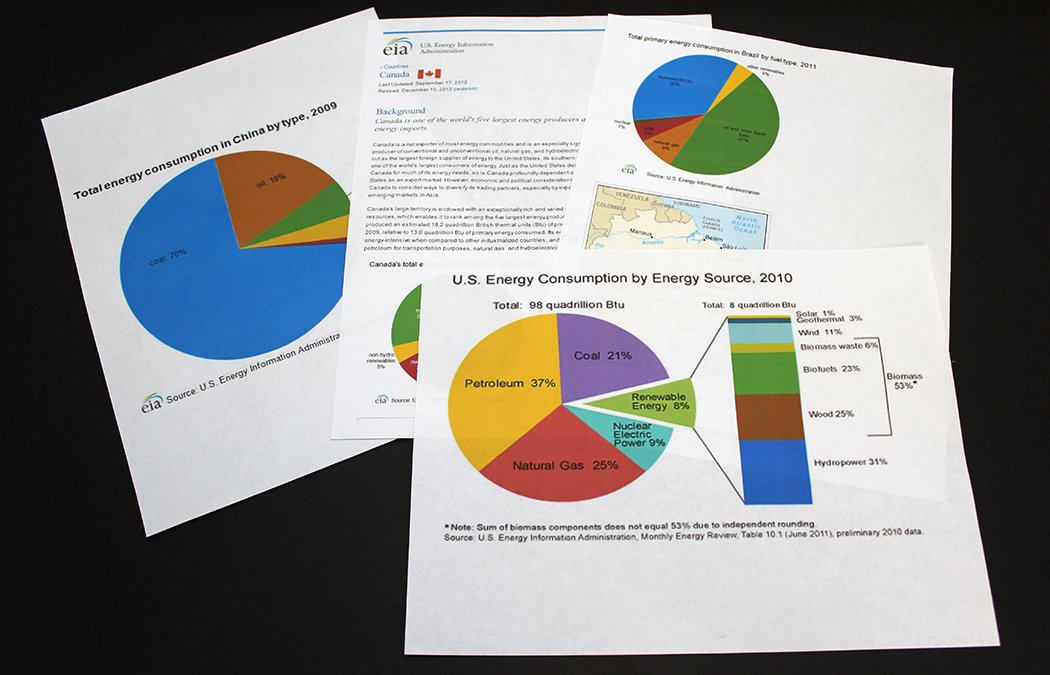
Mobiles are a great way to excite students to explore research & statistical data. They learn to analyze complex content and synthesize it through kinetic sculpture. The making process encourages students to think deeply, problem solve and collaborate.
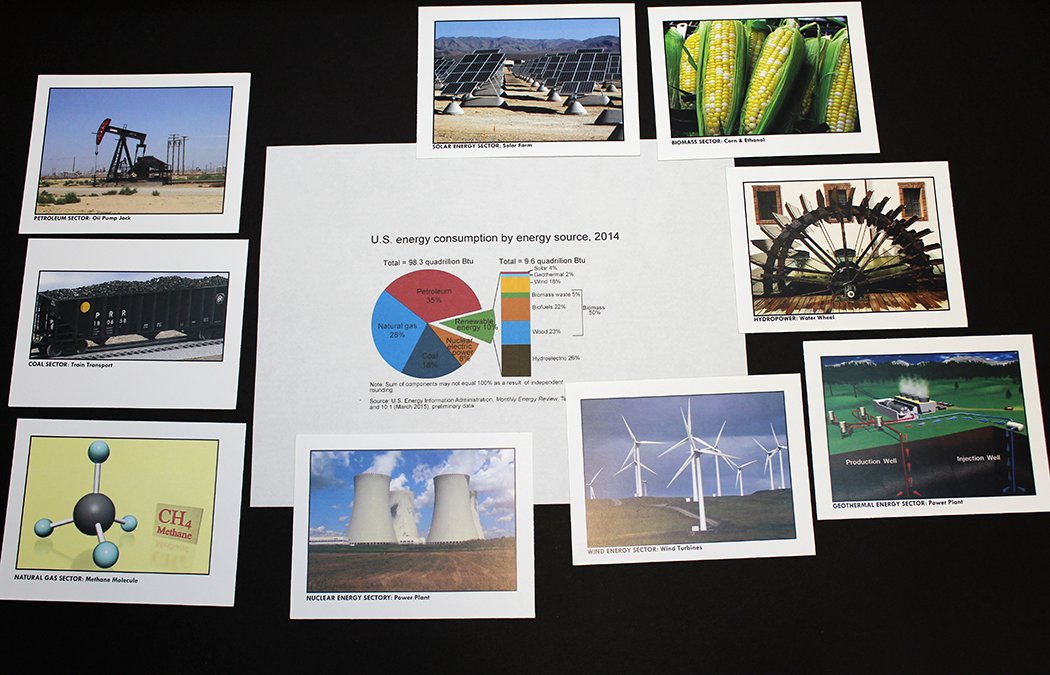
Start with a topic and collect research including images, charts and graphs. Pie charts make great subjects for interpretation. This mobile will illustrate U.S. Energy Consumption Data.

Make a drawing or sketch of your mobile. Each bar segment will represent one "slice" of your pie chart. Symbols will be on one side of the segments and beads will represent percentage data on the other side.

Collect a variety of supplies to make your symbols. Collect inspiration images, too. Your symbols should be small and light. We like to use craft and repurposed supplies.

Make a mini sculpture as a symbol for each category, or "slice" of your pie chart. Add a piece of florist wire to each symbol for hanging.

Here's a sample of a coal train car.

Here's a sample of a mini oil derrick.

Here's a sample of a mini water wheel.

Make a loop in the end of each piece of florist wire for hanging. These will go on one side of each segment bar.

The other side of the segment bar will have a bead section to represent the percentage data. We like to use large beads as 10's, medium beads as 5's and small beads as 1's.

On our graph, nuclear energy represents 8%. So we're adding 1 medium and 3 small beads to a piece of florist wire.

Cut the florist wire to the desired length.
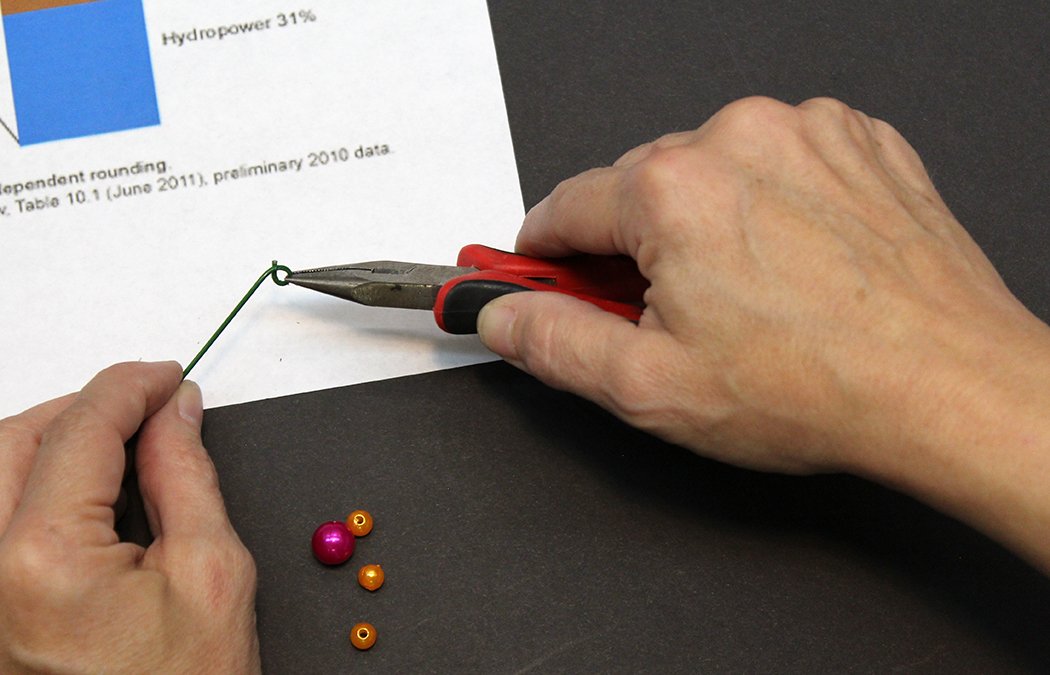
Make a small loop in the end with needle nose pliers.

This bead section represents 8%.
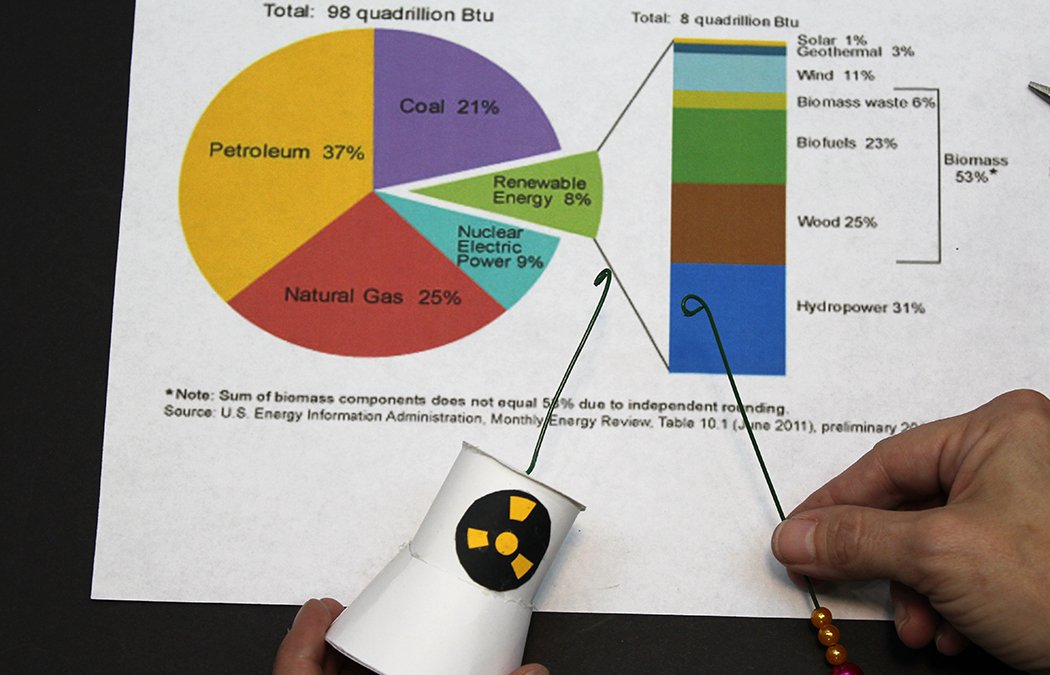
Make a symbol and bead section for each "slice" of your pie chart. Like your pie chart, the bead sections together should total 100%.
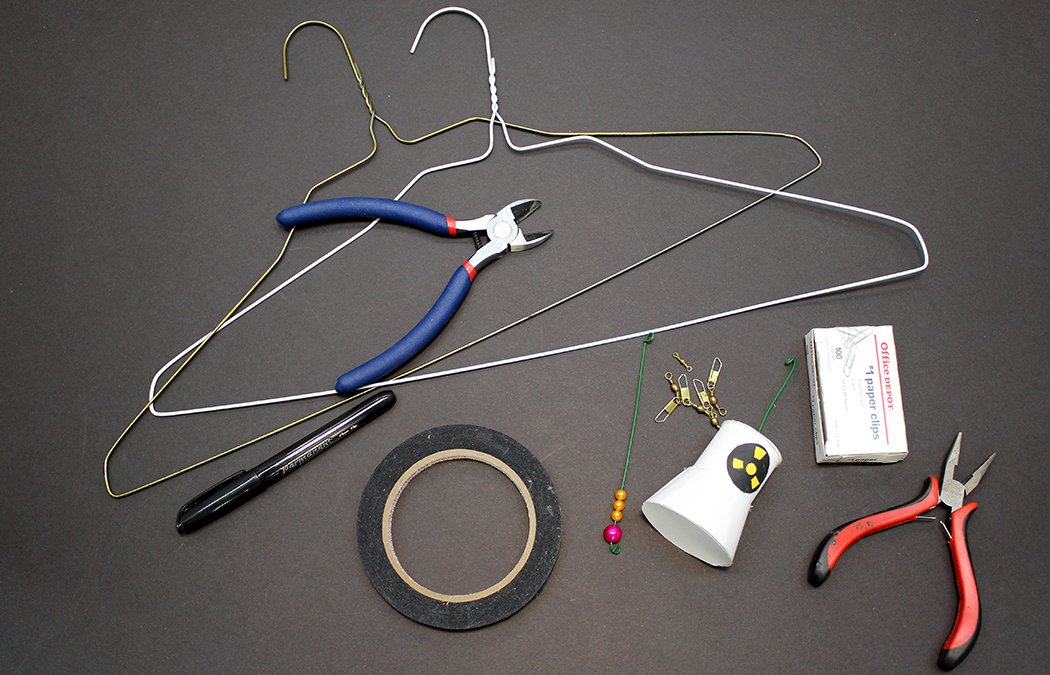
Collect materials to create your bars. You can use coat hangers or wooden bars. You can also use the simple or complex ferrule design (see video tutorials above.)

Cut 8"-12" sections of wire coat hangers to make segment bars.

Each segment bar will have a symbol on one side and the corresponding percentage beads on the other.
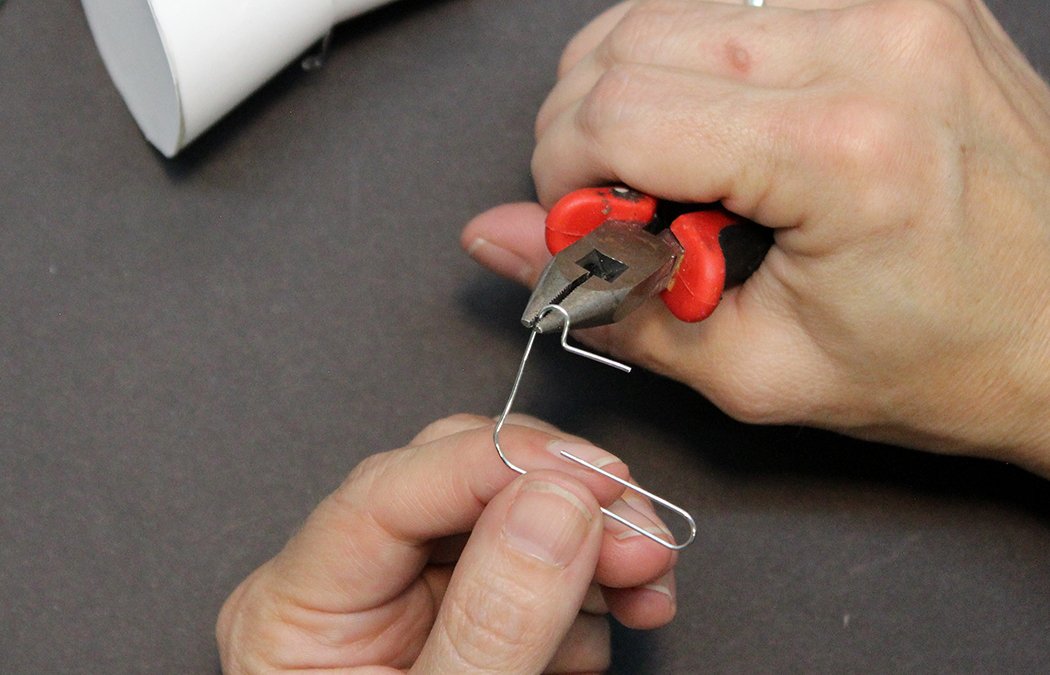
To make complex ferrules, open a paperclip to expose a loop. Bend one end straight to make a "U" shaped bend.

Straighten the other side to see the bend.

Trim the wire.
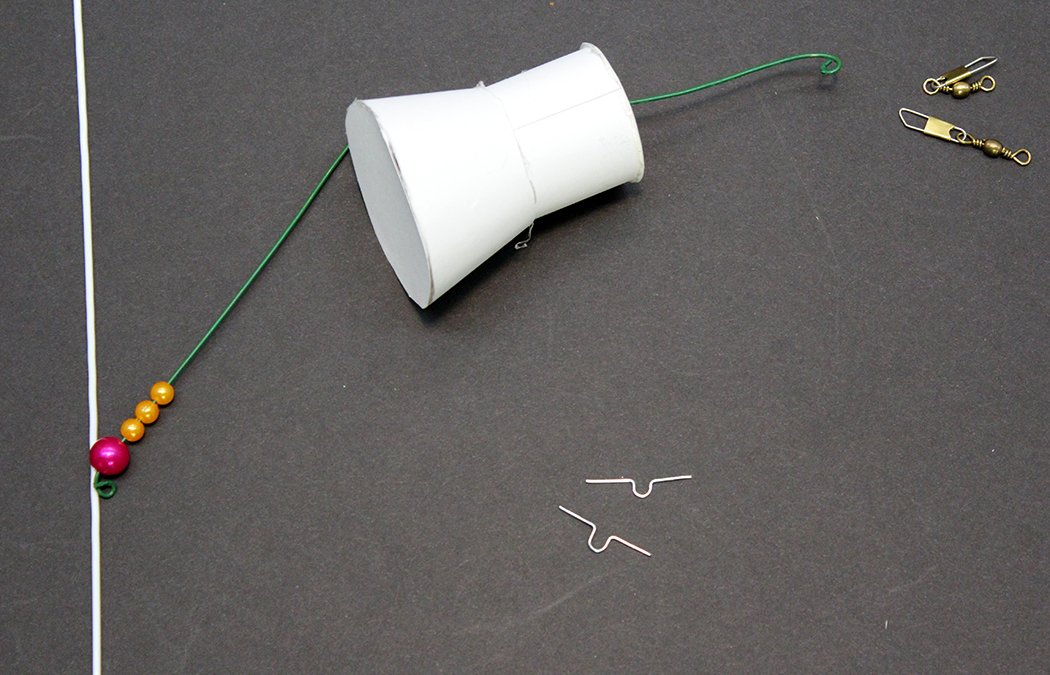
Make a selection of "U" bend ferrules for assembly.

Hold a ferrule to one end of a short bar.

Secure the flat side of a ferrule with masking tape or aluminum tape.

Add the florist wire of your beads to the "U" bend.

Secure the other side of the ferrule with tape.
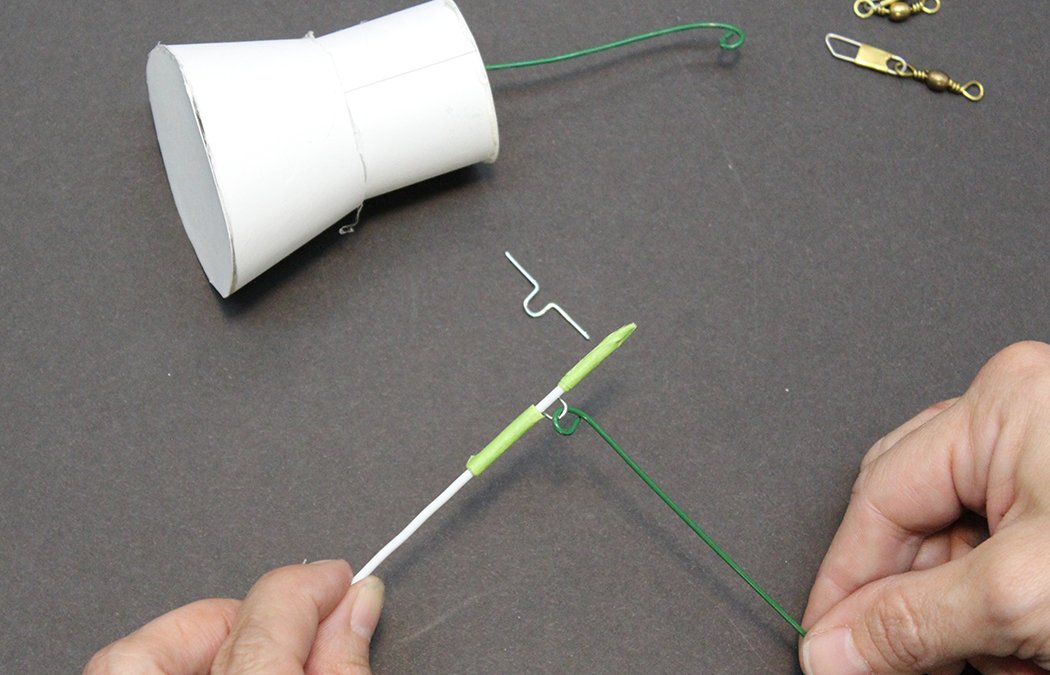
Make sure the wire hangs down straight.
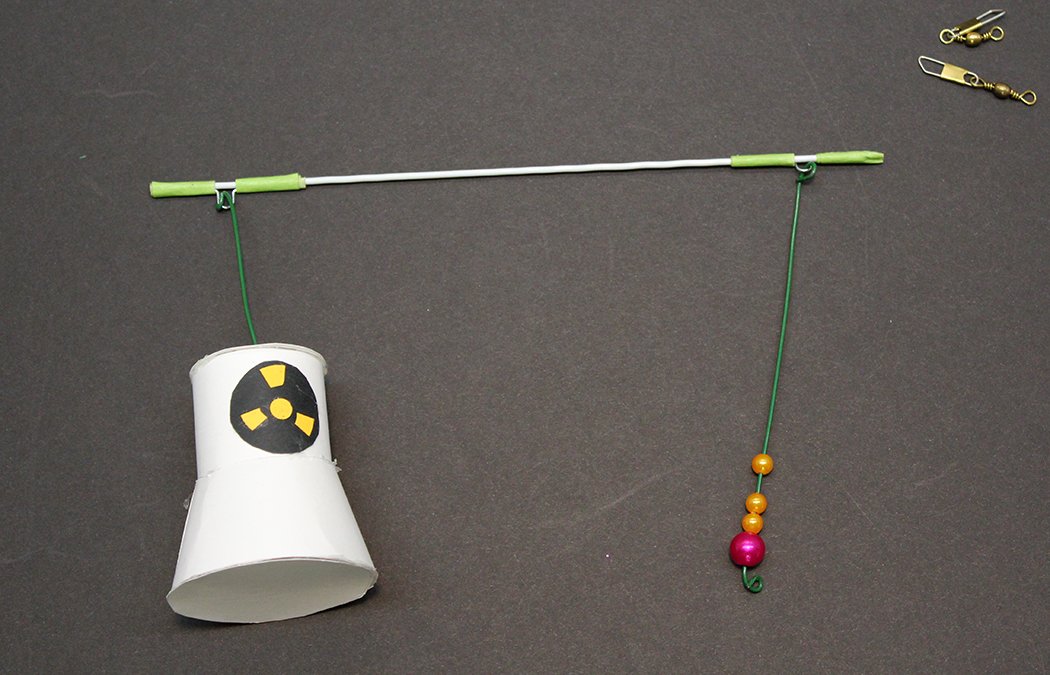
Add a ferrule and the corresponding symbol to the other side of the bar. Make sure both ferrules are pointed down in the same direction.
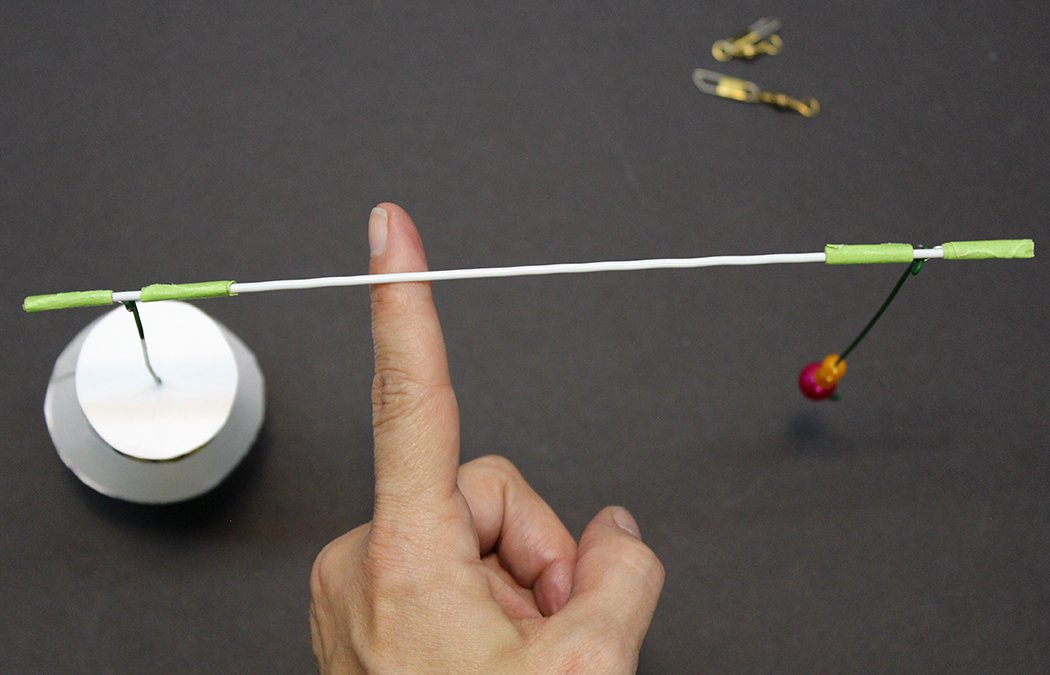
Balance the bar on your finger to find the balance point, or fulcrum. Hold it for a while until the bar is balanced and still.

Mark the fulcrum with a sharpie.

Place the "U" of a ferrule at the sharpie mark. This bar will be connected up so there's only one ferrule pointed upwards.

Secure one side of the ferrule with tape.

Attached a piece of florist wire to the "U". Tape the other side of the ferrule.
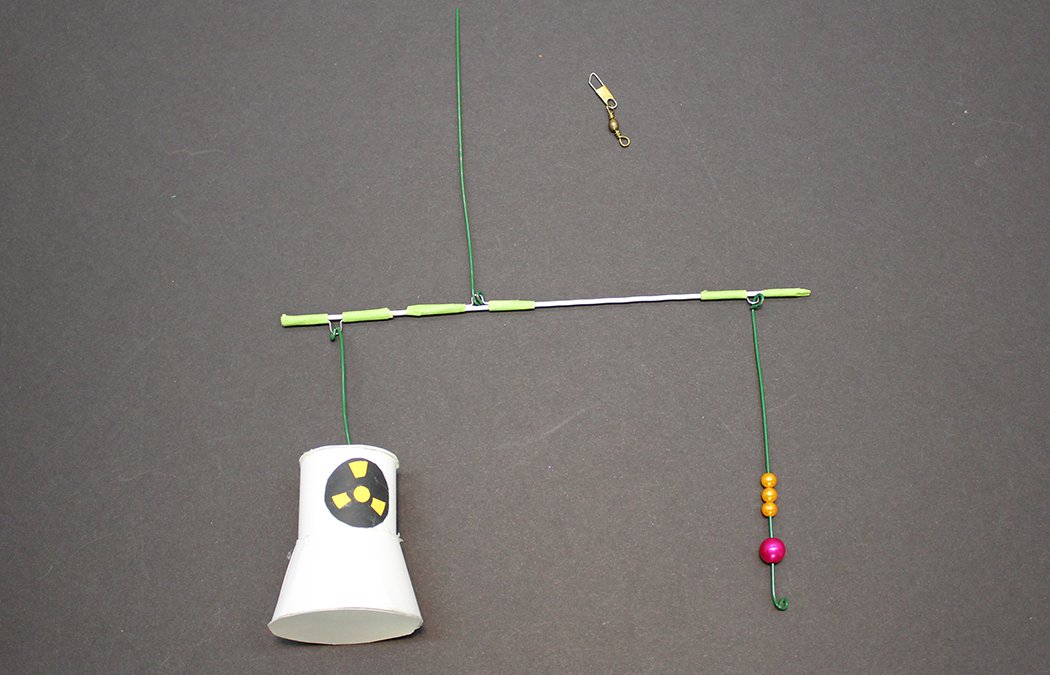
This segment bar for nuclear energy will be ready to hang at the middle of the mobile.

You can add a fishing swivel to the end of the florist wire so the bar spins.
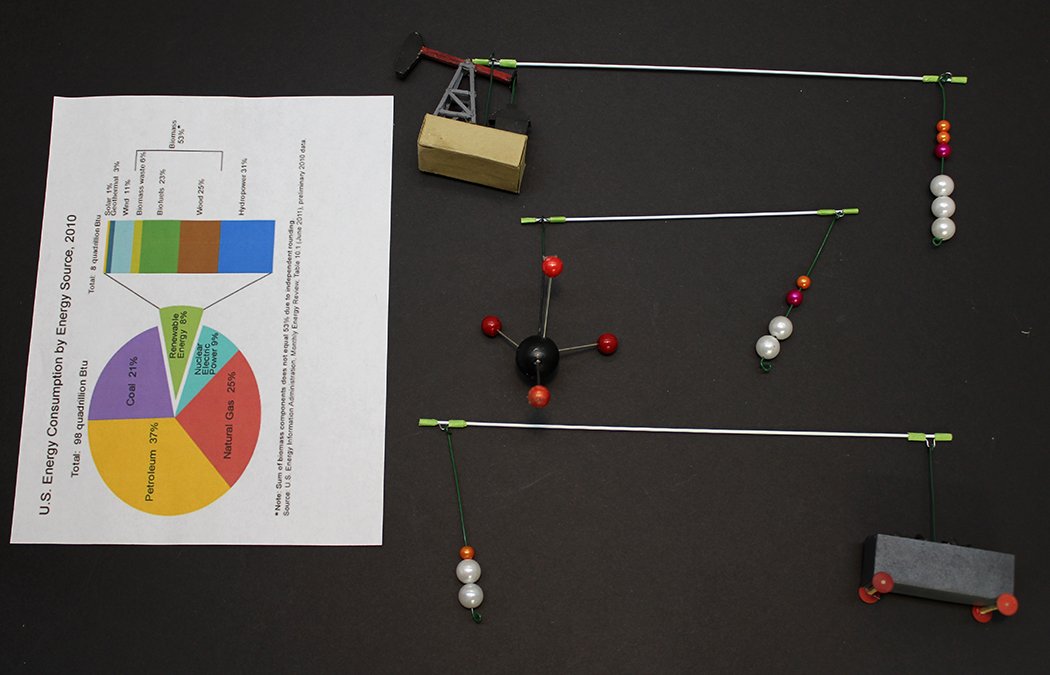
You can also make segment trees. In our mobile design, we are grouping all fossil fuel symbols into one tree to go on one side of the mobile.
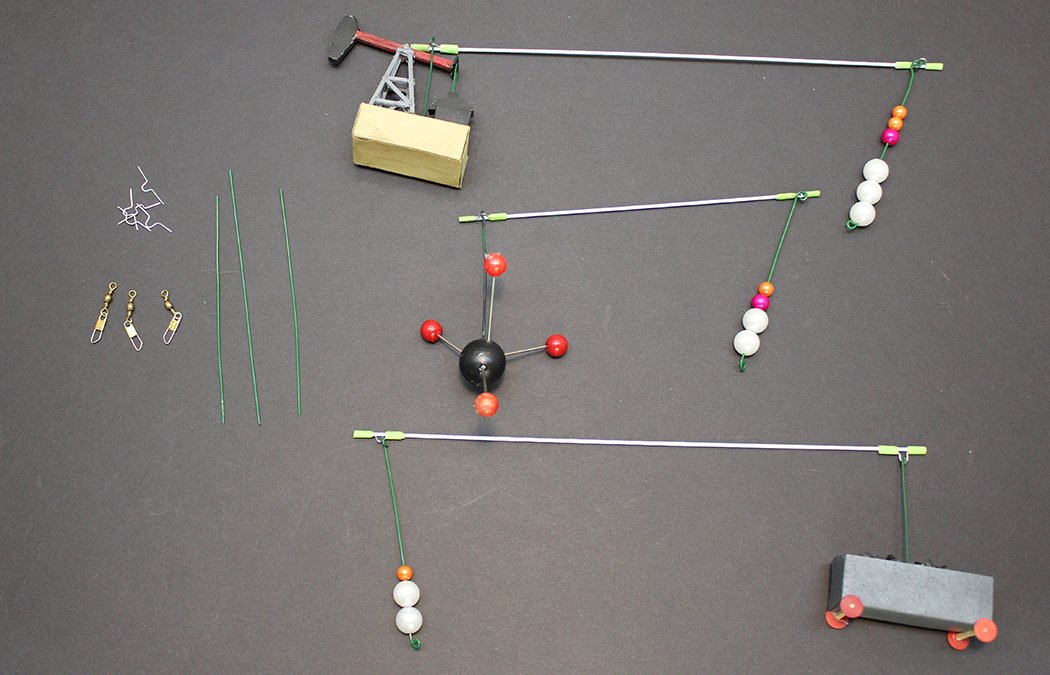
Create segment bars for each symbol and corresponding percentage beads. Space the bars out so the pieces will not hit each other. Get ferrules, tape, swivels and florist wire pieces to assemble.
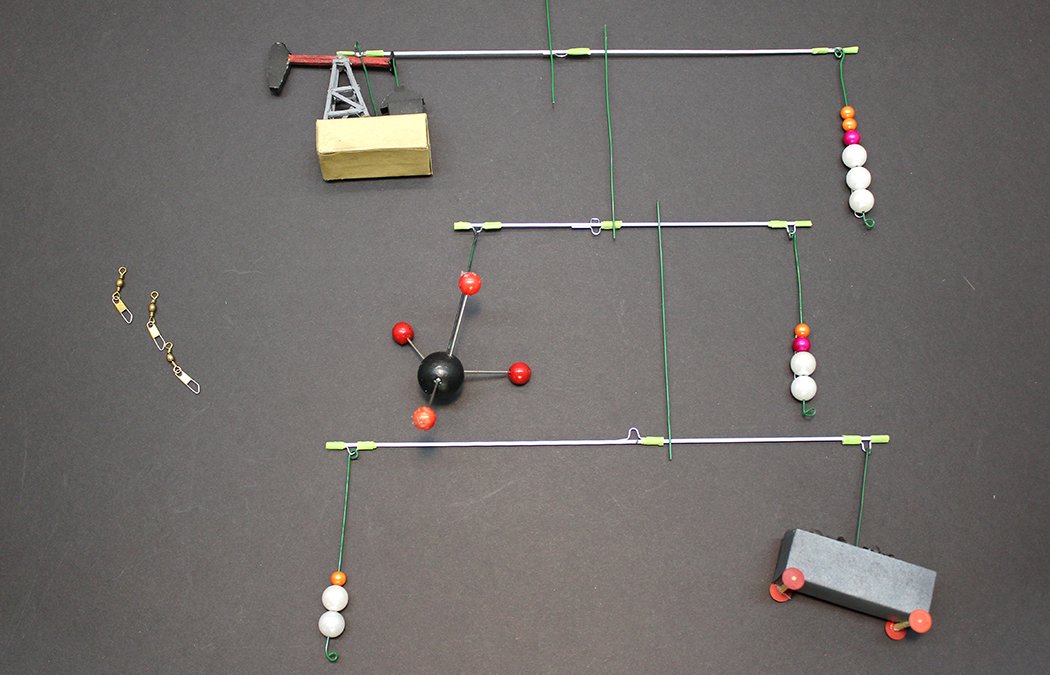
Cut sections of florist wire to connect your segment bars.
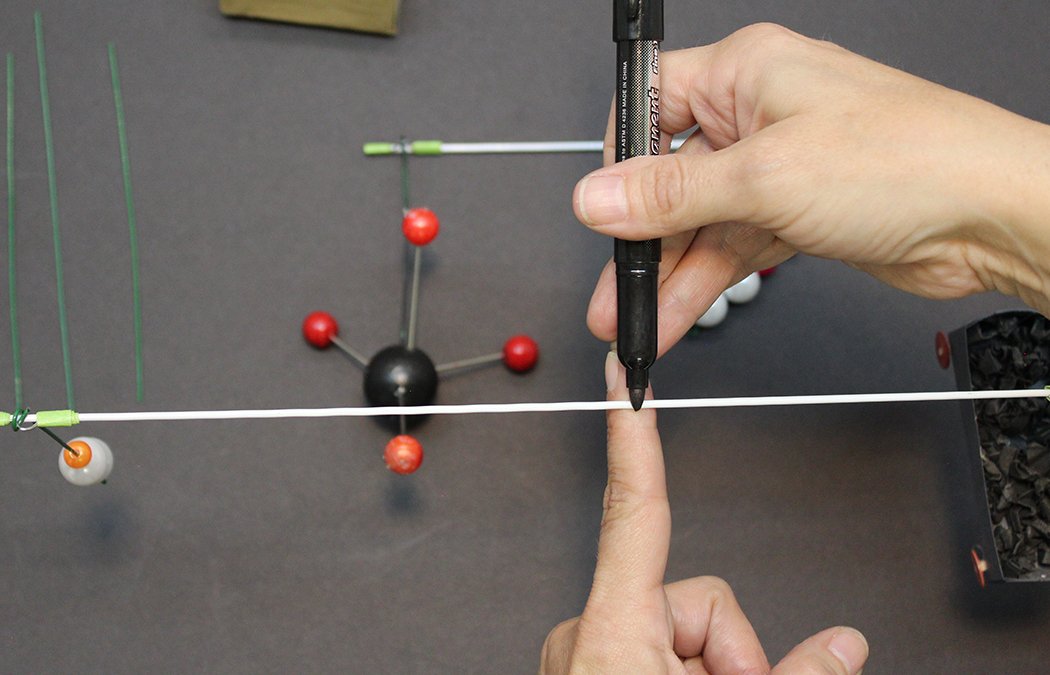
Find the fulcrum for each bar segment by balancing it on your finger. Mark it with a sharpie.
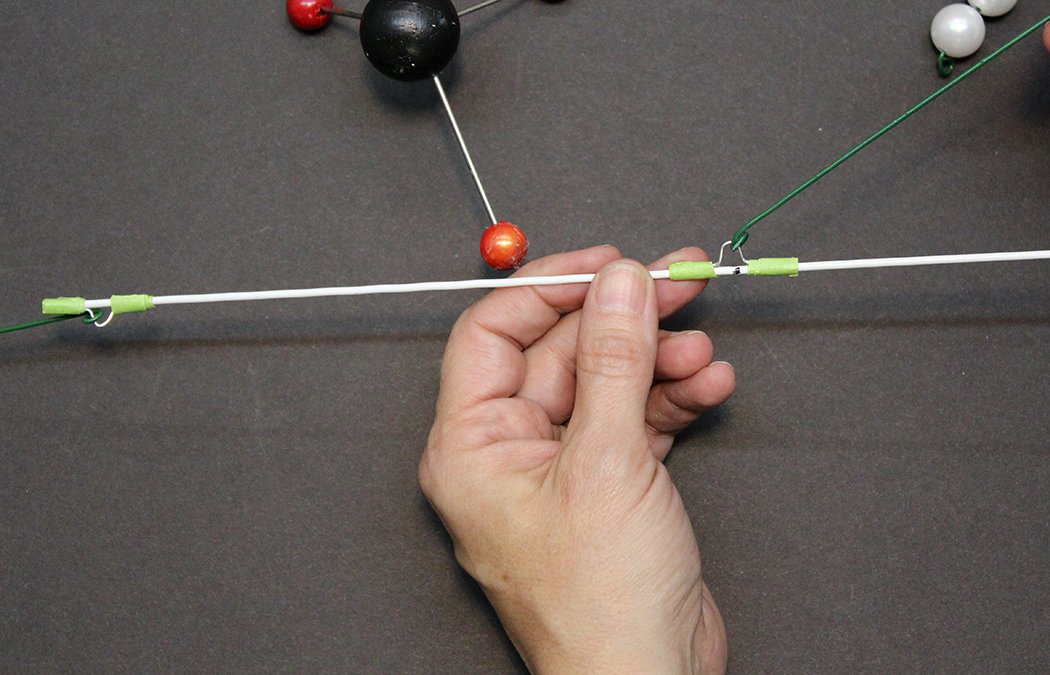
Add ferrules and wire to each fulcrum. Some bars will have 1 ferrule if they are attaching up.

Some bars will need 2 ferrules if they are attaching up and down.
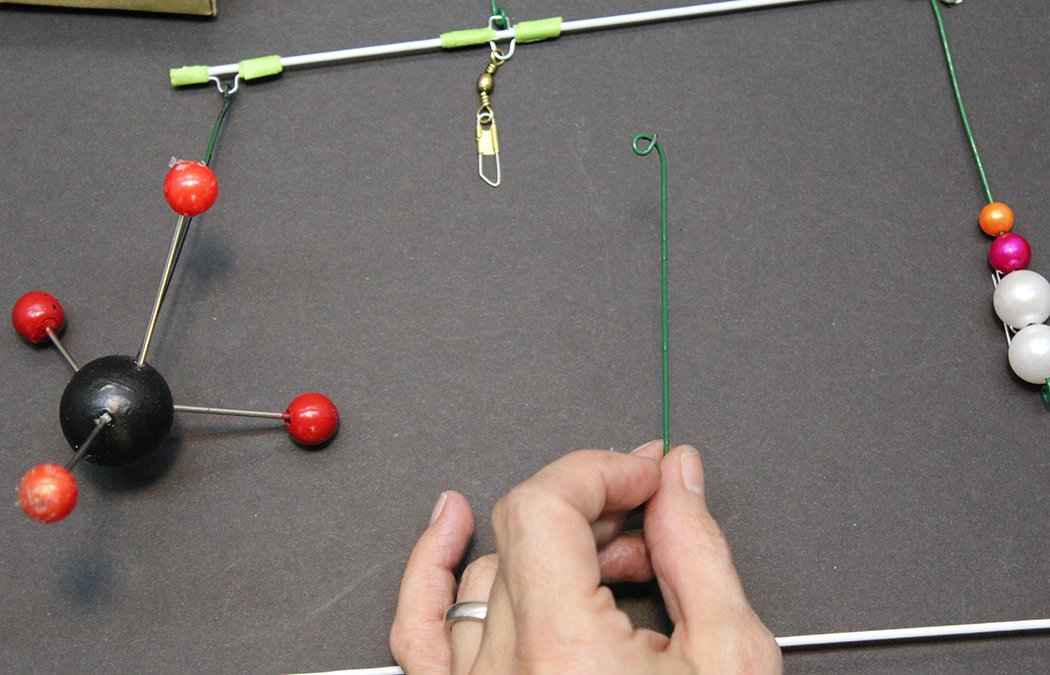
Make sure and add fishing swivels and wire to connect the bars to each other.

Here is an image of the fossil fuel tree. Each bar is connected with ferrules, swivels and florist wire.

Our design groups all the renewable energy in the other tree. Because all renewable energy sources add up to small combined percent, we added the beads to the top of the tree.

Add ferrules to both ends of a long coat hanger wire or piece of welding rod. Attach the fossil fuel segment tree to one end of the rod.

Attach the renewable energy tree to the other end of the rod. Remember to use your fishing swivels.

Balance the long rod on your finger to find the fulcrum point. Add ferrules and swivels to attach your nuclear energy bar. Add a hanger, too. You can also add a title to the top of your mobile.

Check the engineering and balance of your final mobile. Make any adjustments if needed. Hang, share & enjoy!
COPYRIGHT NOTICE:
This curriculum is developed and owned by Eurekus LLC and is intended for educational purposes only. No portion of the instructional webpage or associated materials can be copied, distributed or edited for commercial purposes without the express written consent from Eurekus LLC.
© EUREKUS LLC 2022
